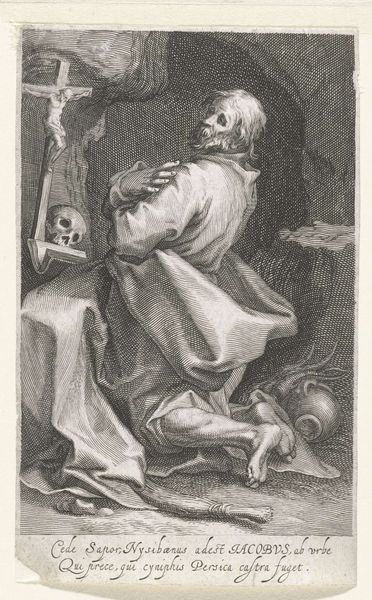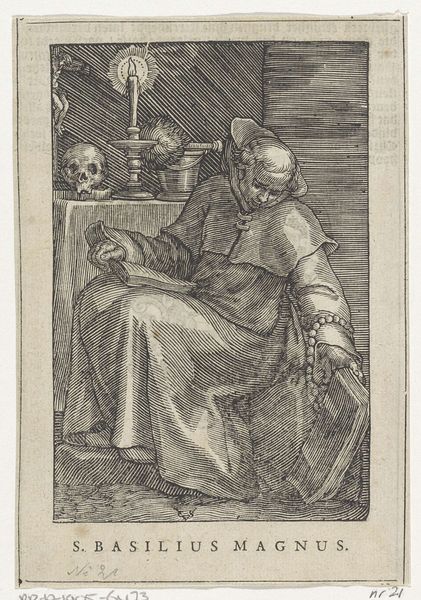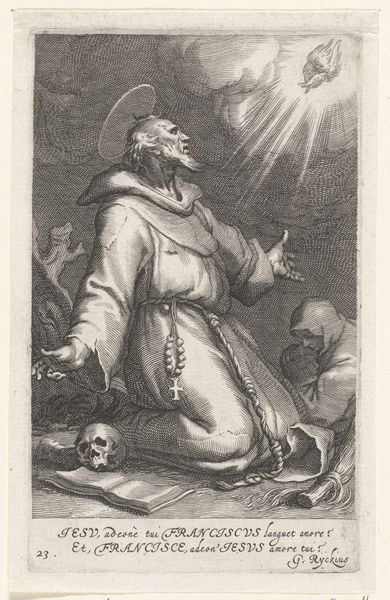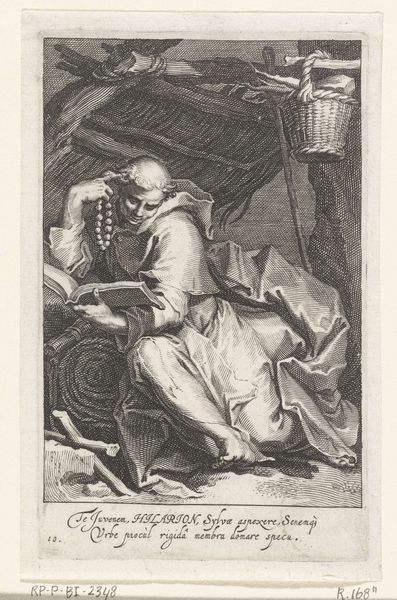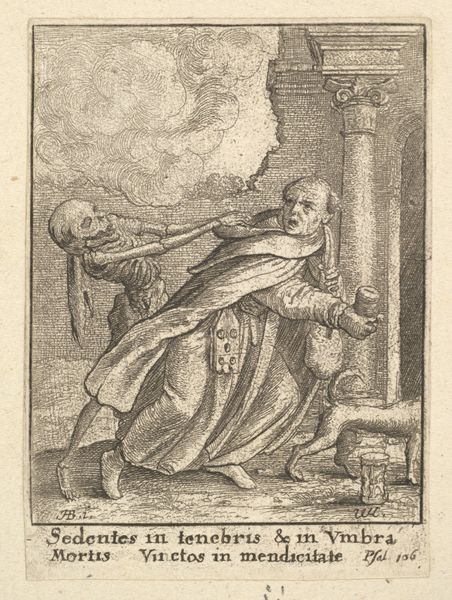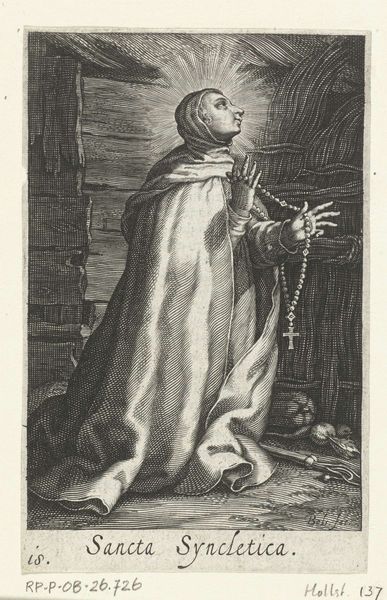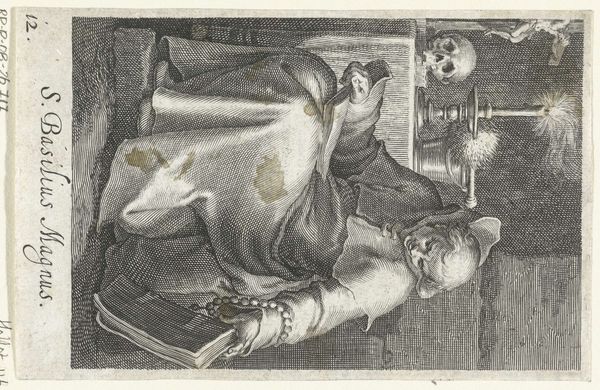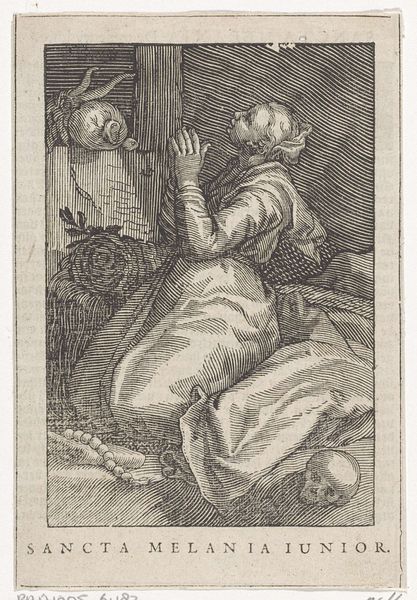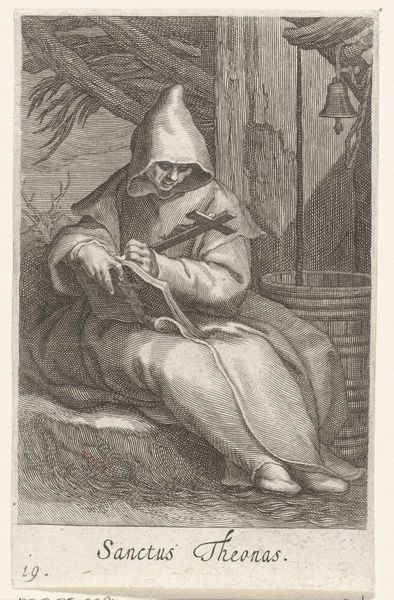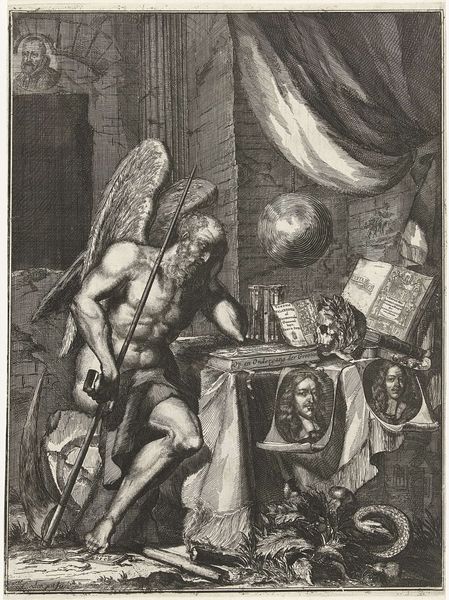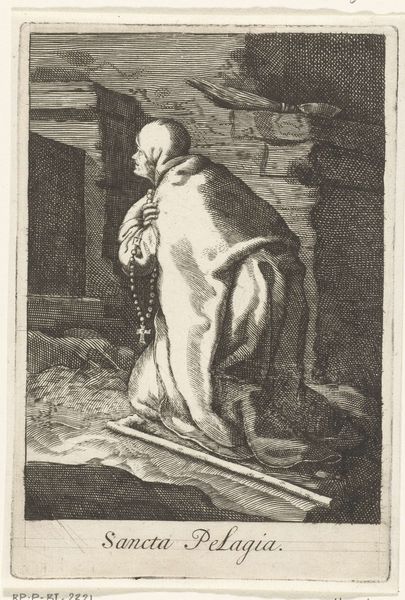
Dimensions: height 147 mm, width 92 mm
Copyright: Rijks Museum: Open Domain
Editor: Here we have "Saint Bruno of Cologne as a Hermit" by Boëtius Adamsz. Bolswert, created sometime between 1590 and 1612. It’s an engraving, so quite small, and yet the detail is incredible. The overall mood is quite somber and introspective. What draws your eye when you look at it? Curator: What immediately strikes me is the representation of Saint Bruno in a setting defined by contemplation and austerity. Consider the deliberate inclusion of the skull, the crucifix, the extinguished candle, and the rosary. Editor: Reminders of mortality, certainly. Curator: Exactly. These symbols are not merely aesthetic choices. They ground the work in the social and religious turmoil of the time. Do you see how Saint Bruno is both individual and archetype? He embodies a rejection of earthly vanity in favour of spiritual pursuit, which resonates profoundly with contemporary discussions on identity and resistance to materialism. Editor: I see what you mean. It is striking how radical it feels even now. He seems to be completely rejecting societal norms. Curator: Yes! Think about the agency within self-imposed isolation. The power dynamics at play are intriguing because Bruno's withdrawal from society could also be seen as a commentary on religious institutions and societal structures. What do you think about his agency at a time of extreme pressure from established institutions? Editor: I never really thought about religious figures having any type of agency. Curator: That is something worth remembering. We've touched upon its symbolism and possible interpretations; understanding this artwork through these lenses helps to challenge traditional art historical narratives. Editor: Absolutely. Seeing how art reflects these power dynamics has given me a new appreciation for how art plays such an important cultural role. Thanks!
Comments
No comments
Be the first to comment and join the conversation on the ultimate creative platform.
